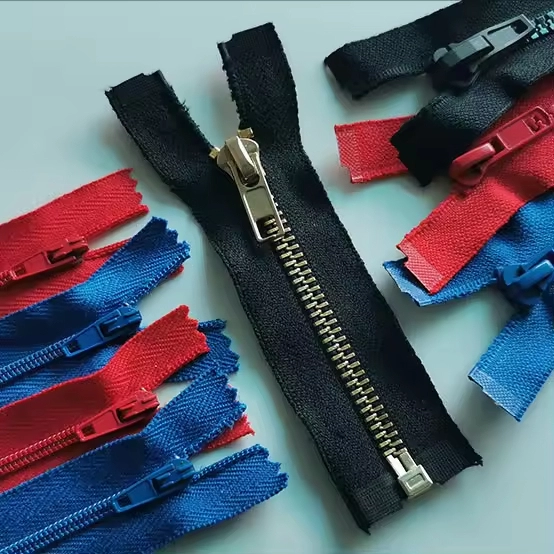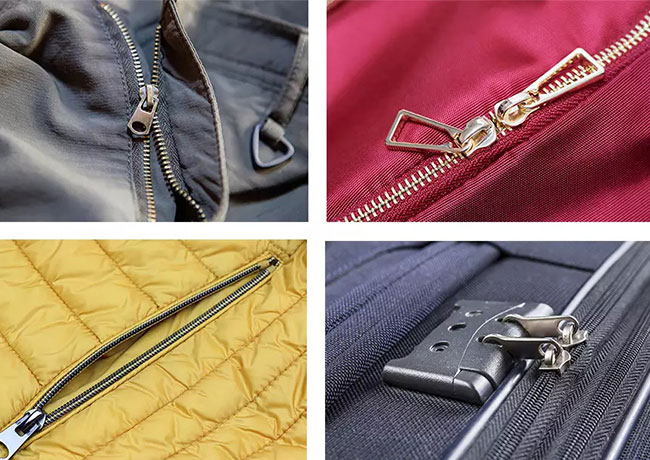
 Apr 10,2024
Apr 10,2024
 BSL
BSL
Nylon zippers, resin (plastic teeth) zippers, metal zippers.
It is worth noting that each type has its advantages, but when installing zippers with a sewing machine, resin zippers, and metal zippers need to be hand-operated to pass the needle through the machine, otherwise, the needle will break, while nylon zippers can be passed directly. Resin zipper and metal zipper zipper pullers are not divided into front and back, while nylon zippers have front and back.
Zippers include 0#, 2#, 3#, 4#, 5#, 7#, 8#, 9#, 10#, 20#...30#
The size of the model is directly proportional to the size of the zipper teeth. No. 3 and No. 5 zippers are widely used.

Closed tail (mouth) zipper, open tail (mouth) zipper, double zipper, etc.
Closed tail (mouth) zipper: The back code is fixed and can only be opened from the front code end. When the zipper is fully open, the two chain straps are connected by the back code and cannot be separated. Suitable for ordinary bags.
Open tail (mouth) zipper: There is no rear code at the lower end of the zipper to set a locking piece. When the locking piece is closed, it is equivalent to a closed zipper. Pull the slider against the locking piece to separate the locking piece, and the chain belt can be separated. Suitable for clothing or items that often need to be opened.
Open tail left and right insertion: The so-called left and right insertion refers to whether you use your left hand to insert the latch or your right hand to insert the latch. The corresponding zipper head and latch are exactly opposite. In European and American countries, there are a large number of left-handers because they eat with knives and forks. Therefore, the left-hand plug is the normal standard in Europe and the United States, while in Asia, the right-hand plug is generally the standard.
Double zipper: has two pullers that can be opened or closed from either end. Pull both sliders against the lock and separate them to fully open. Suitable for large bags, bedding, tents, etc.

Self-locking zippers, lock-free zippers, invisible zippers, waterproof zippers, double-sided zippers, etc.
Self-locking zippers will not slide by themselves without the pull tab and are mostly used for clothing plackets. Lockless zippers do not have this feature.
Invisible zippers use special sewing and installation methods to achieve an invisible effect that makes the zipper "disappear" in the garment when viewed from the front. It is often used in dresses.
The waterproof zipper is a branch of nylon zipper, which is a nylon zipper that has undergone certain special treatments. Commonly used special treatment methods include: applying PVC film, applying TPU film, soaking in waterproofing agent, coating waterproof zippers, etc.
Double-sided zippers use a drawstring and a special puller to achieve the effect of being usable on both sides. They are often used for reversible clothing, tents, etc.
